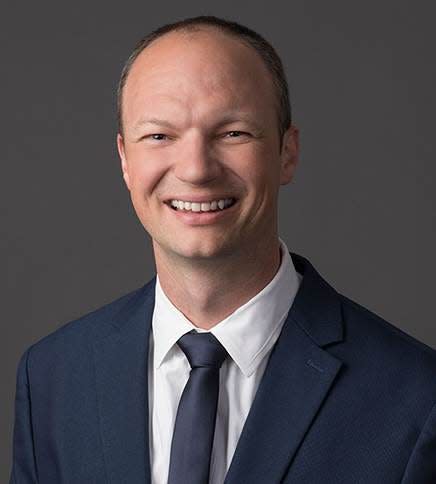Homeless plan addresses 'an entire system of care from beginning to end'

Val Yazell said she often gets asked why a strategic plan to address homelessness being implemented by the city of Springfield and Sangamon County called "Heartland HOUSED" is different from anything else in the past.
Yazell, who is on the executive committee of the plan's newly formed "strategy board," said the answer is two-fold.
"Unfortunately, in the past, all we've had the opportunity to do is to pick pieces of the entire system of care and address those. We've just plugged holes," said Yazell, the city's former planning and economic development director. "This new strategic plan addresses an entire system of care from beginning to end.
More:Illinois State Museum director gets call from Route 66 centennial commission
"The next thing is that we need to create a shift in our perception and the way we approach homelessness. Many times, we have said to someone who is experiencing homelessness, 'Get yourself together, work on your issues and if we have housing for you, we'll try to do something.'
"We have now learned, and much research bears this out, is that we need people to be safe in a home and wrap services around them so they can address whatever issue has brought them to homelessness."
One of the goals of the strategic plan, first previewed in the fall, is to reduce homelessness to "functional zero" in five years.
It also calls for a tripling in permanent housing around the city and hiring a housing development manager.
Heartland HOUSED would have a budget of $625,000, said Heartland Continuum of Care coordinator Josh Sabo, with 40% input from both the city and county, or $250,000 annually, and 20% from Capital Township.
Sabo presented the strategic plan to the full city council Tuesday.
The goals, especially reaching "functional zero," Sabo said, were "ambitious but not unprecedented."
"Functional zero," Sabo said, means if a person experiences homelessness in Springfield, Heartland HOUSED would want to be able to wrap support and services around that person to help them end their homelessness within 30 days.
Other communities like Rockford, he said, have reached "functional zero" for communities like veterans and chronic homeless.
The continuum's last "point-in-time count" identified some 264 people experiencing homelessness in Sangamon County.
As homelessness continues to grow in Springfield, housing hasn't kept up, Sabo said, so "until we create more permanent supportive housing and rapid rehousing opportunities, we have a lot of people in our community who are still hoping for and seeking stable housing."
The plan calls for upping its permanent housing opportunities from 230 to 765, he said.
That doesn't mean they all need to be new builds, like the Park Street Apartments project, Sabo added. The 20-unit project will be owned by Helping Hands of Springfield.
Nick Dodson, a housing navigator for the Continuum of Care and housed at Helping Hands, said it's "about engaging the landlords and bringing them to the table in unique and collaborative ways.
"I meet with landlords who are curious about what Section 8 really is. Maybe I'll go to the actual orientation with those landlords to help facilitate. Maybe they can't fill out the paperwork to the best ability and I might meet with them to do that. It's wearing all the different hats that need to be worn in the community and showing up with those housing providers when we can."
Ward 9 Ald. Jim Donelan called the plan "a positive step forward for this community and the county."
Ward 6 Ald. Kristin DiCenso said homelessness has been a talking point "for as long as I've been on the council. This is a citywide problem. But if we want to get to functional zero, it's going to take all hands on-deck."
Ward 10 Ald. Ralph Hanauer stressed to Sabo the plan was "only going to help the people who want help."

At last week's committee of the whole, Hanauer said he was concerned that homelessness advocates knew people were sheltering in the former Land of Lincoln Goodwill building on North 11th Street where a massive blaze erupted Christmas Eve. Hanauer said those advocates had "a responsibility" to inform city officials or police about people being in the building.
"What percent (of the homeless)," Hanauer asked Sabo Tuesday, "isn't going to want help and what do we do for them?"
Sabo acknowledged there might be people who are resistant, but "through street outreach engagement, through continued mobilization, through compiling (databases of homeless people), it's an incremental growth. It can be complex, but it can be successful.
"As you get the system moving so people are going into housing and they're not waiting in shelters for years, you'll see people's mental health improve just on the basis that they have a place to lay their head at night. If we can reach this goal in five years, everything we do is going to transform."
The city, said Mayor Jim Langfelder, has a little over $2.38 million in HOME-ARP (America Rescue Plan) funds for agencies who deal with homeless populations to use. Langfelder anticipated having a final spending plan for city council and Housing and Urban Development approval by March.
Also on Tuesday, the council approved as part of the consent agenda a nearly $403,000 Community Development Block Grant (CDBG) to assist the operation of the Salvation Army overflow shelter.
Contact Steven Spearie: 217-622-1788, [email protected], twitter.com/@StevenSpearie.
This article originally appeared on State Journal-Register: Springfield IL tries to address homelessness in new strategic plan
